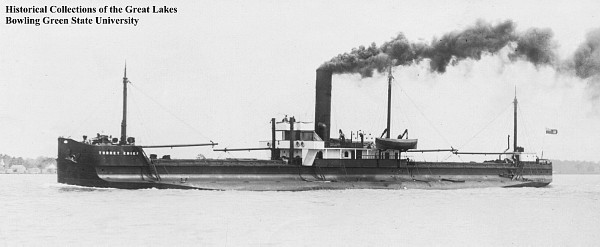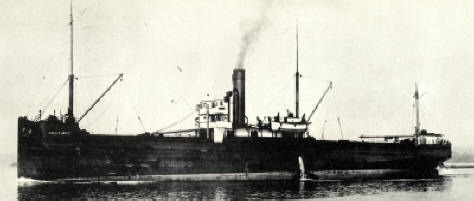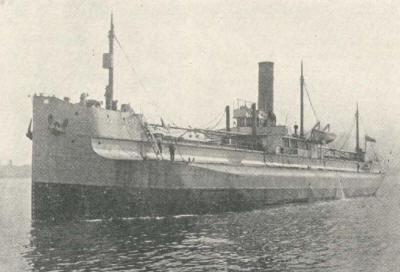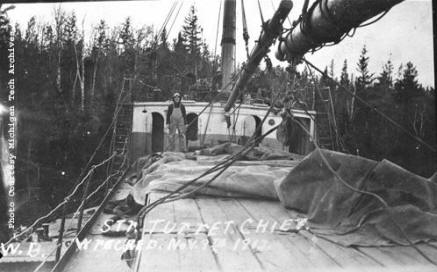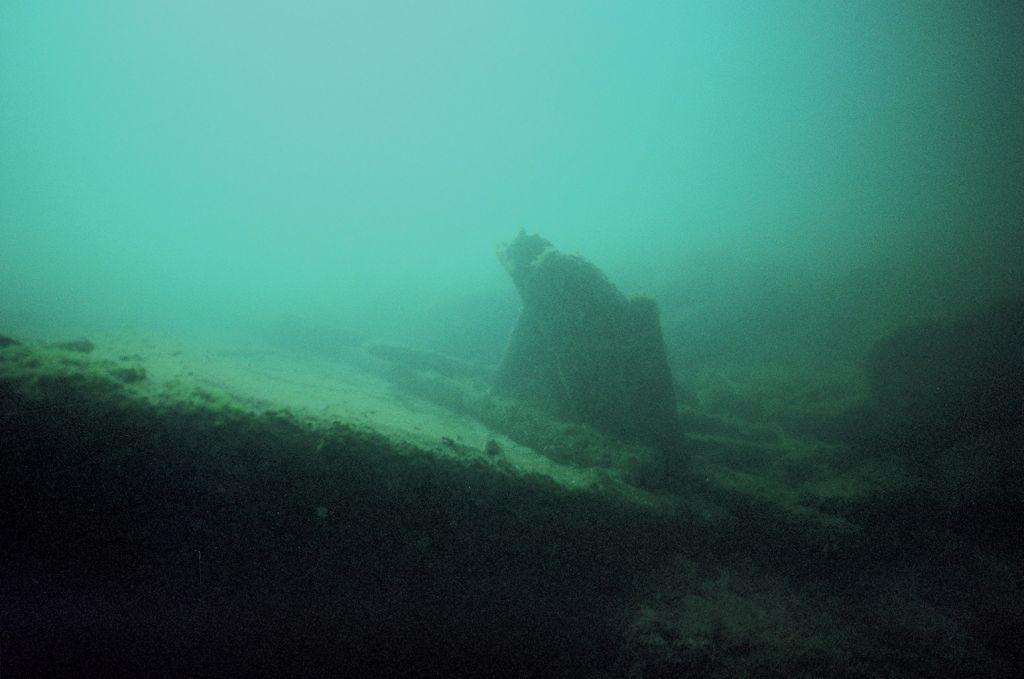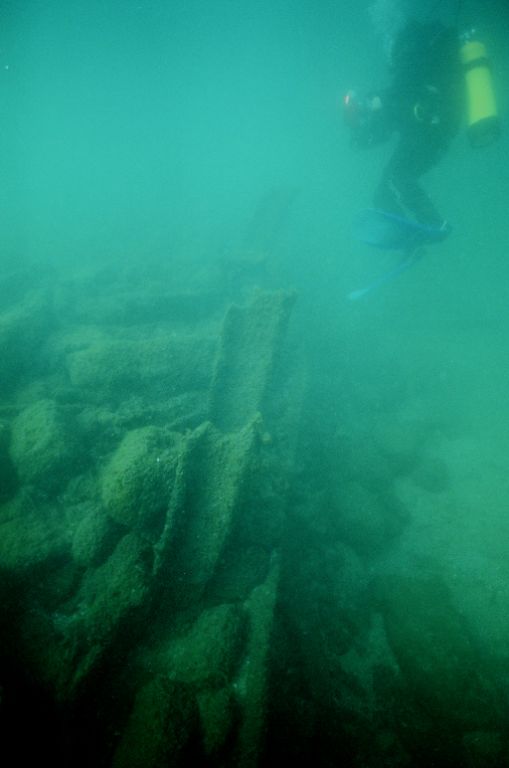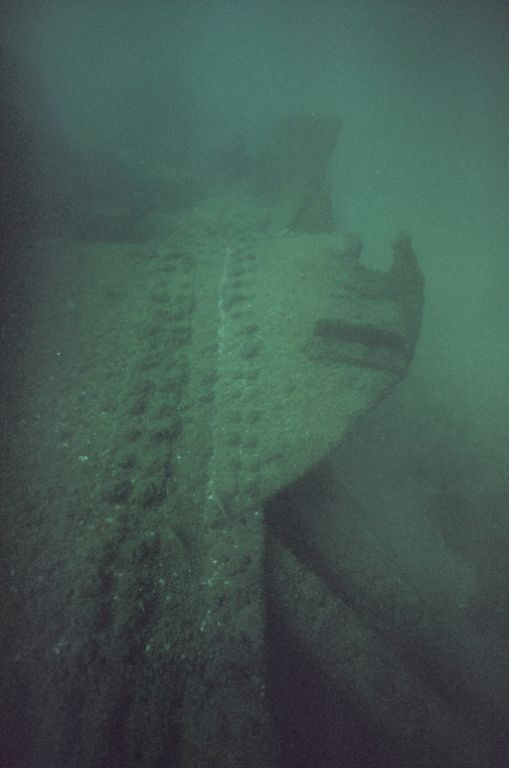N 43° 15.615′, W 086° 22.119′, 3 miles north of Muskegon channel, 25-30′ deep
The Salvor began life as hull #248 — Turret Chief — at the Doxford & Sons Shipbuilding Company in Sunderland, England in 1896. She was one of a new breed of vessel designed primarily to reduce harbor and canal fees, especially through the Suez Canal, which were based on flat deck space. The vessel’s design reduced horizontal deck space by sloping the ship’s sides inward to create a narrow deck. She was 253 feet in length and 44 feet wide, drawing 19.7 feet of water.
According to the Toronto marine Historical Society: “During the 1890’s and early 1900’s, more than 150 Turrets were built by Doxford and some of them were quite large. However, the popularity of the class began to wane after the turn of the century as large vessels were required and the advantage of lower canal and harbor dues was lost due to a change in the way these fees were calculated. The Turrets were rather difficult to unload as the narrow deck limited the width of hatches. Like their cousins, the Whalebacks, the turret ships had their day and lost their popularity when progress and the need for larger ships rendered them obsolete.”
The Turret Chief was brought to the Great Lakes in 1907 when she was purchased by the Canadian Lake & Ocean Navigation Company Ltd. They held the vessel until 1913, when she was sold to the Canada Steamship Lines Ltd. and then to Entente Steamship Company in 1914. It was then she was renamed Vickerstown, followed by Jolly Inez in 1918. In 1922 she was sold to International Waterways Navigation Company Ltd., who ran her until 1927.
T. L. Durocher Company of DeTour, Michigan was the last owner from 1927 through her loss in 1930, naming the vessel Salvor and changing her configuration to a steel barge to carry bulk freight in the tow of a tug.
The vessel suffered a number of mishaps throughout her career. Her boiler exploded on Lake Superior on June 23, 1911, killing one man. She was stranded 6 miles east of Copper Harbor, Keweenaw Peninsula, Lake Superior, November 9, 1913 during the Big Blow, and abandoned. She was salvaged in 1914, and rebuilt at Port Arthur.
As with many ships, she was requisitioned for war service 1914 and served as a munitions carrier between Britain and Archangel. She returned to the Great Lakes in 1922. She was stranded under peculiar circumstances during a dense fog on Saddlebag Island, False DeTour Channel, Lake Huron, on November 16, 1927 and abandoned. She was salvaged by T. L. Durocher and converted to a barge.
Her final voyage was September 26, 1930 when she broke away from the tug Richard Fitzgerald while bound from DeTour to Muskegon with a load of breakwater stone during storm on Lake Michigan. She foundered in 25 feet water, 2 2/3 miles north of Muskegon, Michigan about .4 miles off shore. Five lives were lost in the tragedy (one source says 11).
The battered hull of the Salvor lies in 25′ of water, just northwest of Muskegon, Michigan channel. Waves and ice, whose effects are multiplied by time, have bent, broken, and buried the hull, leaving the highest point of elevation of the wreck just a few feet off the bottom. The wreck lies north and south, but bow and stern are indiscernible. The hull’s massive, bent, metal plates are visible around the perimeter of the wreck. Gears, large bolts, and other tools are sometimes visible, when the shifting sand leaves them uncovered. The wreck is covered with zebra mussels and is home to a large colony of Gobi fish. The Salvor is a shallow, easy dive, with much to see and explore. The underwater photos below were taken in 2009 by Valerie van Heest.


